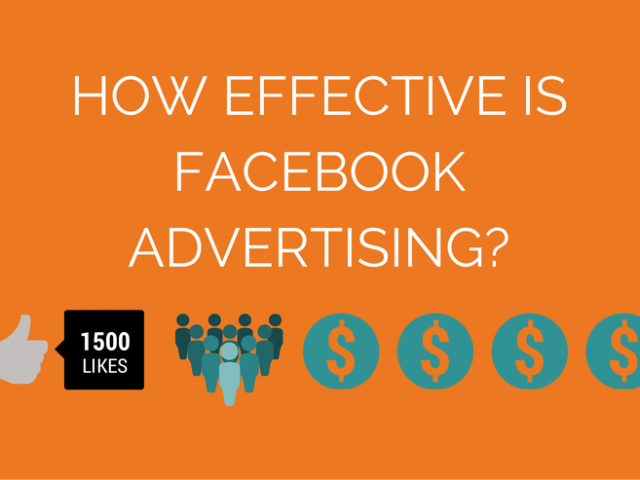A high percentage of the eCommerce store or affiliate site owners that I meet and talk to ask me, “How can we drive conversions from Facebook ads?”. In light of this, we’ve put together the below guide to show where Facebook advertising should be used and how.
From an advertising perspective on Facebook you have a number of options for your eCommerce store. The first aspect to think about, and to test your brands suitability for, is the different ad types. Those which will have an impact in driving the bottom line straight away are:
- Website ads (linking direct to your site)
- Promoting a Facebook page post
The decision on where to focus can be tricky, with our recommendation being to run both simultaneously and measure conversions & ROI as the deciding factor. A website ad can point to your homepage or deep link into your product page, meaning that the click you pay for is guaranteed to land on your site. The disadvantage of these placements is that they are only available on desktop (missing the huge amount of mobile traffic), and can only be placed on the right sidebar in Facebook, which achieves a lower CTR. Promoting a Facebook page post can again either point to your homepage or deep link to a product or category page. There’s the added flexibility around copy to consider too, as you can write as much as you want in a Facebook post, although naturally the shorter and sweeter the better. Unlike with the website ads, you can place these ads however you wish – the highest CTR’s and conversions tend to come from NewsFeed only placement across mobile & desktop, as this gives the content greater prominence. The downside of promoting a page post is that you do have the potential for more wasted spend if you don’t set up correctly. If you bid CPC for instance, a click can be considered as a click on the photo or to expand the post, rather than a click on the link. Previously, website ads also had more flexibility around volume as you can test any number of products this way in separate ad versions, whereas promoting a page post meant it would have to physically be on your page (and it’s never going to end well if you add all of your products to your page in separate posts!). Now, Facebook has the option to create so-called “dark ads”, which allow you to create a page post for promotion that is hidden from your page – meaning you can create as many variations as you wish.
 Once you’ve got set up with the different ad types, the focus should be on optimising based on images, copy, and landing pages. Try different images for your products and run ads against each other with different types of images for instance to find out what works. The same with the ad copy (whether you’re running website ads or promoted posts) – try different variations and see what works, as you may be surprised what your audience actually react to best. The joy of Facebook ads for eCommerce stores is in the targeting. There’s a whole host of options here which we won’t go into in detail as that’s a whole other piece (see one of our brief overviews here), however there are some key points to reiterate.
Once you’ve got set up with the different ad types, the focus should be on optimising based on images, copy, and landing pages. Try different images for your products and run ads against each other with different types of images for instance to find out what works. The same with the ad copy (whether you’re running website ads or promoted posts) – try different variations and see what works, as you may be surprised what your audience actually react to best. The joy of Facebook ads for eCommerce stores is in the targeting. There’s a whole host of options here which we won’t go into in detail as that’s a whole other piece (see one of our brief overviews here), however there are some key points to reiterate.
- Think About Your Audience: if you’re selling men’s Rolex watches, try targeting your ad at men in your target age group who like watches, or Rolex, or perhaps other high-end brands to ensure you hit the right people
- Target based on your CRM: use custom audiences to target based on email address or phone number to hit customers you’ve dealt with previously, particularly if they aren’t responding to your email marketing
- Think about ‘Lookalikes’: Facebook can generate ‘lookalike’ audiences based on your custom audience targeting sets. These users are people with similar demographic and interest set profiles to your custom audience segments
- Consider using FBX: the Facebook exchange allows you to target based on users who have visited your site – allowing for the power of retargeting within the Facebook platform
- Experiment With Targeting Sets & Judge On ROI: try different targeting sets, and think outside the box. As with the Rolex example, clearly targeting people who like Rolex is going to get you a good CTR. However, they may already be Rolex owners – think about how to find people who desire a Rolex rather than already owning one.
- In the States? Use Partner Categories: if you’re in the US you have a trove of data available to you with Facebook’s partner categories. These allow segmented targeting based on purchase history and intent – perfect for eCommerce.
To make your campaigns a success, measurement is key. Facebook have recently launched new conversion tracking capabilities, meaning that you can generate conversion pixels for placing on your order confirmation pages in the same way that you can with Google AdWords and on other platforms. If you implement these you will be able to see conversions in your Ads Manager reports, making life a lot easier with ROI tracking at an ad level. This will allow you to take the decisions as to which ad types or other variables are working for your store. The key to success with Facebook ads for eCommerce is to create tests, and learn from your mistakes. Let the data you gather guide you, rather than gut instinct. This means adding Facebook conversion pixels to your site, and tracking your cost per conversion within Facebook as well as your standard metrics such as CPC’s and CTR’s. Mixing copy and images around, and testing whether category landing pages are performing better than deep-product links, and Facebook targeting variation testing is all essential for success, so dedication is needed. Don’t underestimate the task ahead of you, but we guarantee you, success through Facebook Ads is most definitely possible.
Ben Harper
Latest posts by Ben Harper (see all)
- Content Marketing eBook - July 21, 2014
- How Effective Are Facebook Ads? - July 4, 2014
- What The World Cup Means For Advertisers - June 4, 2014



